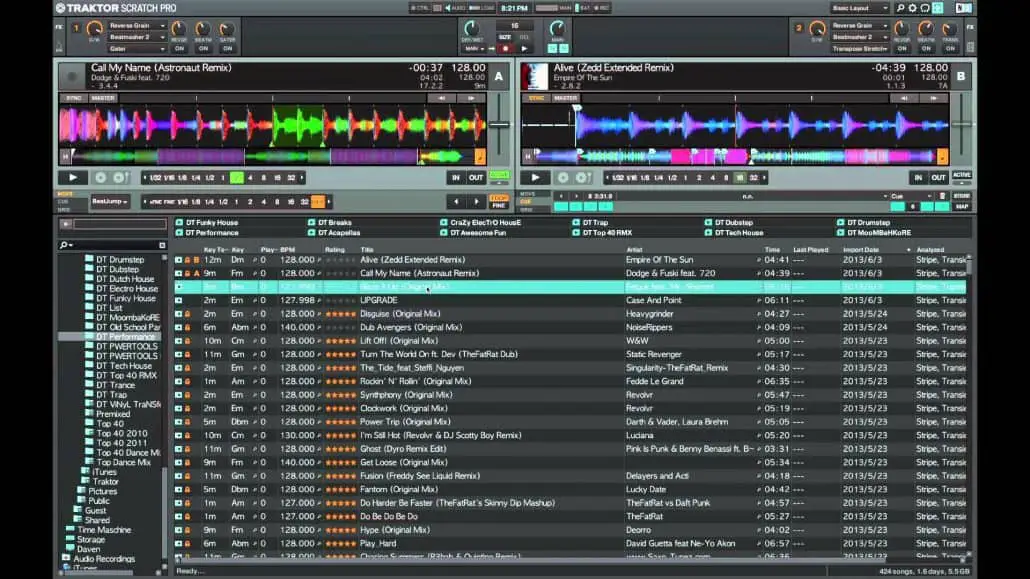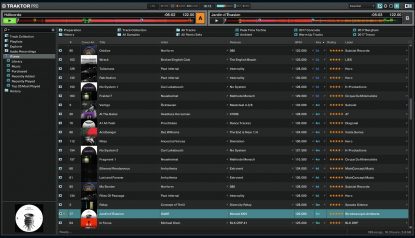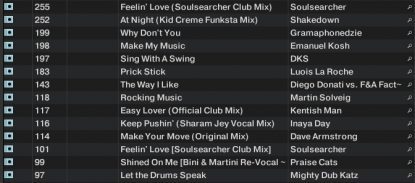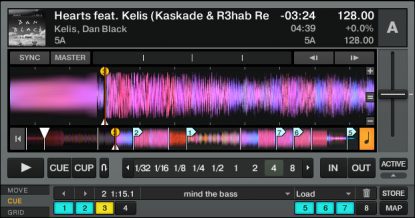How to create a DJ set list
Creating the ultimate DJ playlist for any gig
So you think you can mix? Great but can you DJ? There’s a lot more to DJing than just beat-matching. Do you know how to build the best DJ set?
You have the power to create a vibe, take your audience on a musical adventure and make memories. So you’d better be prepared.
This article will tell you exactly what you can do to create the best DJ set and how to curate the ultimate playlist to win the crowd and be remembered!
So lets get started.

This is most definitely what you need to think about first. There’s no point creating what you think is the best DJ playlist ever just to discover its really not what your audience were after. This applies to any kind of DJ whether you’re in a nightclub, a bar, a wedding reception or someone’s birthday party.
There are some important things to think about first.
What venue will I be DJing in?
Whether you like it or not certain musical venues expect certain styes of music. For example if you’re DJing in a wine bar your audience expect music they can talk over. If you’re DJing in a mainstream club people expect some tracks they recognise. If you’re DJing in a hotel function room you’ll probably want to keep the intensity of your tunes down a notch or two.
 Venue size, acoustics and its primary purpose all play a part and people tend to want their expectations met in those environments. While you may prefer to bang out some anthems you could find you don’t get the response you were hoping for if you haven’t read the room correctly.
Venue size, acoustics and its primary purpose all play a part and people tend to want their expectations met in those environments. While you may prefer to bang out some anthems you could find you don’t get the response you were hoping for if you haven’t read the room correctly.
What time will I be DJing?
Playing the right music at the right time is vitally important, again this helps meet expectations that you have no control over. Your audience are in control of that one!
For instance if you’ve been given a time-slot in a night club, the type of set people will want at 10pm be wildly different to the one they want at 3am. Generally nightclubs like to build up the intensity during the evening and keep the crowd energised right to the end. This isn’t as easy as it sounds.
The most memorable sets ever performed by world class DJs are often because they knew exactly what to play and when to play it.
How long is the gig?
Another important factor not only for selecting the right number of tunes but also to curate the vibe throughout the set. Here’s an easy format to build your sets based on duration
- 10-30 minutes – Launch right in, make an impact with your musical genre, short and tight mixes and cuts
- 30-60 minutes – Open with something special, build the energy up over the first 30 minutes, maintain for 10-15 minutes, end with something memorable and different
- 60 – 120 minutes – Ample time to build up and switch to new styles or tease the crowd over the first hour and let it rip in the 2nd hour
- 120+ minutes – Energy levels will peak, plateau and possibly drop during a long set so be prepared to re-invigorate the crowd and throw in plenty of surprises along the way.
This of course is just a rough idea of what you could do but generally these formats work best. Its tried and tested by plenty of world class DJs and if you analyse the sets of most big DJs you’ll often see this pattern over the course of their time-slot. I’ll explain more about this in another chapter.
So now you know where you’ll be playing and probably have an idea of the style you’ll be playing. Its time to filter your library of tunes down to just those you’ll actually need.
There’s a number of useful methods to start filtering but first some preparation
 Make sure all your tracks have full meta-data available. This includes BPM, key, musical genre and rating.
Make sure all your tracks have full meta-data available. This includes BPM, key, musical genre and rating.
If you need to find the key of songs we’re reviewed a free online service that can help you create amazing playlists by key.
I always rate every tune in my record box.
The rating is partly based on personal taste but also based on how I think the crowd will react to it. The more stars the bigger expected reaction. 5 stars will likely send the crowd into a frenzy, 1 star will still be enjoyed but likely have less impact. Think of it like an intensity rating.
With this data you can now filter your library.
Start by BPM. Unless you’re mixing multiple genres its wise to pick tracks within a given beats-per-minute range. A max of 10 BPM higher or lower than your base level. That doesn’t have to be your first tune’s original BPM if its forcing other tracks in your set list to be played at 8% or higher. Just make sure you play all your track in a positive or neutral speed.
Musical genre is next. You can pick multiple genres of course but in order to select tracks that compliment each other you’ll want to filter by this to see what you have in your record box.
These two filters will reduce your library down to a manageable amount that you now start picking tracks from and experimenting with mixes.
Wondering which DJ software is best to store your library in? Check out this article on our site comparing Serato and Traktor DJ software.
Know your tracks inside out. The more you play them the better you should know them so play the tunes in their entirety without mixing. You’ll get to understand their length, potential cue points and parts you can loop too.Group your tracks
Now its time to find other tracks that compliment it.
I tend to pick at least 2 other tracks that I have a feeling would work well. This “hunch” is usually based on having played the tracks a lot and knowing them well. The more you play them the easier this grouping will be.
Jump to near the end of one track and start mixing in a cue point from 1 of the other tracks you think will compliment it. While you should know how to beat match feel free to hit sync and make life easier for yourself right now. You’re just interested in hearing what sounds these 2 tunes will blend like when mixed.
You’ll soon discover what beats work well together, what low and mid frequencies compliment or clash. Most modern DJ software has a “comments” column in its library, make use of the comments section and store any notes as you go. This is especially useful if you’re adjusting the key of a track to match another. A note like “Set key to 2.49 to match track X” can save you lots of time hunting for the right setting during your DJ set.
Remember you can create groups of 3 songs that contain tracks from other groups. In fact this is beneficial. I’ll explain why shortly.
Order your tracks in the playlist
Now comes the crucial part. Putting your tracks in order for the perfect DJ setlist.

You’ll probably notice that not all tracks are great show openers, or closers for that matter. Some tunes work best when mixed in from other tracks and out to others, while some tracks set the perfect tone and vibe that can really get your set off to a good start.
Its often the most difficult to start and end a set, you’ll want one good punchy opener and generally a few options to close on, sets can over-run or be cut short for a multitude of reasons so your end needs to be flexible. But your start is crucial!
In some of your groups of 3 there should be some tunes that have atmospheric openings, or at least have a break that you could loop, add effects to or even edit to create that perfect start. You can use all sorts of tricks to get the show started. Here’s a few.
- Pick a track that doesn’t start with beats
- Start the track from a cue point
- Add effects to the start that make your opening track different from the original (use delay, reverb, flange or filter)
- Loop part of the track with added filters, then remove the loop and off you go!
- Start with an a cappella and bring in beats from your next track at just the right moment (usually the chorus)
- Create sound effects, your own vocals or spoken words to open with, then drop the beat when the moment’s right
After your opening track
Now its time to add more tracks to your set list. This is where your groups come in, especially those with songs that feature in more than one group.
Add your groups to the playlist and where songs feature in multiple groups, put those groups one after the other. This is the quickest way to build up a picture of how your DJ set will flow. From this you’ll know that with this order the tracks should compliment each other well.
But that doesn’t mean this is the best order.
While you want tracks to work well together you also want to do something a little different.
For some great examples of putting together the perfect set list check out our exclusive mixes on The Top Show.
If your set was just these complimenting groups back to back then your mixes will be largely be smooth and possibly a little dull. Not because the tracks you’ve chosen are poor quality but because people need surprises! Memories are forged when the unexpected happens.
 Think of every major DJ set you’ve witnessed, what stands out? Was it the silky smooth mixes and seamless tunes or was it the tune they dropped that sent the place in to a frenzy and had everyone on their feet begging for more?
Think of every major DJ set you’ve witnessed, what stands out? Was it the silky smooth mixes and seamless tunes or was it the tune they dropped that sent the place in to a frenzy and had everyone on their feet begging for more?
Adding a little spice to your play list is what is most likely to create memorable DJ sets so take another look at your library. Here’s a few pointers to get you going.
- Pick tracks from different musical genres but a similar tempo. This helps keep the rhythm but completely surprises the crowd.
- For house music try adding a classic soul or disco track in the middle of your mix. Especially if its been covered recently by a producer
- Add one or two tracks from 5 – 10 years ago. Something people know but haven’t heard in ages. This never fails!
- Add an a cappella of a well known track to your ultimate DJ playlist. Then build up the percussion and beats to really get the crowd singing along
- For drum & bass sets, try dropping an old school hip hop track in your playlist, the BMP is roughly half a drum and bass tune so is easy to keep the rhythm.
There’s plenty of other ways to surprise your audience but these are good place to start. The more creative flare you can add to your playlist the more memorable it will be.
Crowds love the unexpected but think carefully about how it will fit in with the rest of your set. Use the surprise elements carefully and don’t overdo it. Be careful not to lose the flow of your set, it can be hard to recover if you don’t get it right. I would argue the mixes around these surprise elements are the most important of all.
When you get it right these moments in your playlist can transform a set from being good to being awesome!
Selecting your tracks is only part of creating the best DJ setlist. Once upon a time that was enough to impress a crowd. With DJ hardware taking creativity to a whole new level you can do so much more these days and you’ll want to make use of it.
What are hot cues?
 Rather than just having a starting cue point on a track, modern DJ software will let you set multiple cue points which are commonly called “hot cues”. These allow you to instantly jump to the cue point and continue playing from there. You can effectively remix any track live.
Rather than just having a starting cue point on a track, modern DJ software will let you set multiple cue points which are commonly called “hot cues”. These allow you to instantly jump to the cue point and continue playing from there. You can effectively remix any track live.
Be sure to have at least 4 hot cues set up. One at the start, 2nd when the vocals kick in, The 3rd when the first break starts and the 4th when the track is near to ending. This is a minimum and will allow you to play around around the length of time it takes to mix in the track and start the first break. You no longer need to make sure the two tracks 4-beat structure match.
Its usually possible to have up to 8 cue points so make sure you set them on every track. They’re especially useful for marking moments where melodies come in or out, where vocals start, where choruses start and where multiple breaks start and end.
What are loop cues?
These are much like hot cues except they are preset loops with a start and end point. This allows you go get super creative by jumping and starting a loop. Now you have a never ending track with a useful vocal or percussion loop.
You can then mix in your next track in the playlist, or maybe an acapella vocal track, or add some effects to create a new sound. Loop cues give you the chance to get creative without worrying about the track ending. It also helps you extend the time you have to mix in to the next track. Gone are the days of running out of beats to mix from, now the beats continue to roll until you bring the fader down.
Here’s a quick video from Native Instruments showing how loops can enhance your mixes.
What are markers?
These are less useful but handy at a glance. Some DJ software lets you add markers to your track. While you can’t usually jump to them seamlessly they are a visual notifier of when things happen in a track. So you’ll know how far away a new melody may be or when verse 2 or 3 starts.
Whatever tools your DJ software and hardware gives you be sure to play every track thoroughly, analyse where the best place is for your hot cues, loop cues and markers.
Now that you have your tracks are in roughly the right order, with some surprises in there too. Your cue points all set up and every track throughly analysed, its time to practice your set.
Before you get going here’s some DJ tips to help make the best use of your time
- Make notes as you mix, add comments to the tracks in your library if you want to. This could be certain sounds to listen out for or notes on the best moment to mix.
- Adjust hot cues if you feel their positions didn’t help you mix as well as you could. You can move them to best sync the two tune’s structures for the perfect mix.
- Mix with sync mode on, you’re not worried about beat-matching right now, you’re analysing when to mix in each track so keep the workload light.
- Stop a track if you need to, try another in its place if you feel its not working. Adjust your playlist as you go.
- Repeat your set list from the start multiple times until you know the tracks are in the right order
- Experiment with effects and loops to enhance a DJ set list. Don’t over-use them but do try and create new sounds now that you’re confident your tracks are in the perfect structure
Practice makes perfect and great memorable DJ sets don’t happen by accident. So the more you practice a DJ set the more you’ll understand what works, what doesn’t work and what you need to do to improve it.
I’d recommend setting aside a decent amount of time to do this all in one day. This will keep the mixes and tunes fresh in your head and help you analyse the entire set in a more efficient way. Of course there’s no harm in repeating your practice sets before the big gig. By the time the big day comes you’ll know the set inside out.
Advanced techniques
I highly recommend you read this article on advanced DJing techniques to really make the most of your new setlist. It’ll really help you boost your sets and make the most of your chosen tunes.
You’ve mastered your mixes, now its time to get a little more creative!
If you’re using DJ software or hardware that allows one-shot and looped samples then I highly recommend you load these up and start playing around with them during your set. There’s plenty of ways these can enhance a set and add a whole new layer to your tunes.
There are two main types of samples that work best.
Percussion loops
These are fantastic for remixing a track on-the-fly. You can get these online and in packs from vendors like LoopCloud. You could even create your own. Sync up the BPM with your master track and add a percussive layer to the track thats playing.

I recommend keeping the volume level below that of the master track, you’re trying to add audio texture to a professionally produced song, not overwhelm it.
You can buy and sometimes download for free percussive loops and many other samples from places like Loopmasters, Looperman or SamplePhonics. While you can also get melodic loop samples remember these will need to fit the key of the track you’re playing. If the key doesn’t match it can sound pretty bad so be careful.
One-shot sound effect samples
 These don’t work as loops but can be awesome soundscapes and effects that add a bit of intensity or atmosphere to a track. The most obvious one-shot sound effects are drums, cymbal crashes and familiar sounds (think laser beams and alarms!) but really you can get much more creative than that.
These don’t work as loops but can be awesome soundscapes and effects that add a bit of intensity or atmosphere to a track. The most obvious one-shot sound effects are drums, cymbal crashes and familiar sounds (think laser beams and alarms!) but really you can get much more creative than that.
One shot samples can also be vocals, swirling sounds that pan left and right, pads and other audio textures that fade out or end rather than looping. You can add even more to these by introducing effects and filters with your DJ hardware. Check out the Demo Samples on this sample pack from Loop Masters for a good idea of what you can get.
Take a look at this pack of loops and one shots, perfect for house and techno DJ set lists.
Saving the best until last. This is by far the most important tip I have for you when creating the best DJ set list.
You are in control of your crowd, you can dictate their energy levels, their mood, their emotional connection to the music you are playing, so you have a duty to take them on the ride of their life with your DJ set.
 Its not easy but mastering this skill is without doubt the number 1 priority for any DJ, whether you’re a beginner or an experienced DJ.
Its not easy but mastering this skill is without doubt the number 1 priority for any DJ, whether you’re a beginner or an experienced DJ.
So its not just about finding great tunes that work well together. Here’s some pointers.
- Think about how you can build up the intensity through the entire DJ set.
- Listen to how the style of the tracks in your playlist evolves from track to track.
- Does a particular tune help transition from one vibe to another?
You can also use your surprise elements and tracks as a way to book-end a particular “chapter” within your set. Helping you to change the atmosphere and transition in a memorable way to a different style, tempo or musical genre.
The longer your DJ set the more you get to play with this journey, building up, bringing down, changing style, linking a soundscape together. This is definitely the skill many DJs lack but something you’ll always notice the world’s most talented DJs are absolute masters of.
Think of your DJ playlists a puzzle. Adding each piece to the puzzle builds up a bigger picture. A narrative that people will remember.
Now it’s your turn
There’s plenty here to get stuck in to that will help you approach DJ set list building in a whole new way.
Remember to know your music from start to finish, analyse thoroughly and make sure your library is filled with markers, hot cues, loop cues and comments so you’re ready to mix any track in your box.
Group your tracks in to complimenting sets of 3s and build your play list up.
Remember to throw in a few surprises to make your set memorable
Add custom loops and samples and master the use of effects to create entirely new sounds and live remixes.
I recommend you also read my article with 31 ways to improve DJ skills as it gives you many more great pointers to create the best DJ possible.
